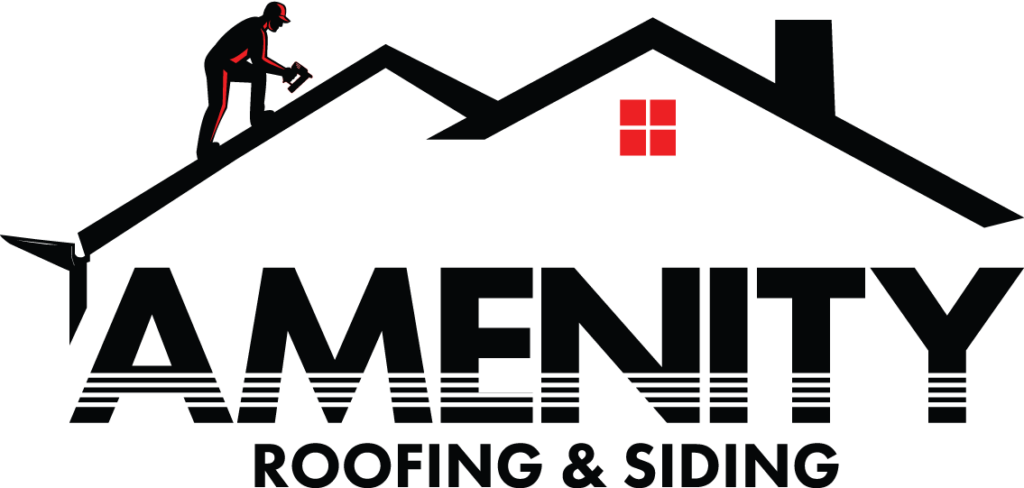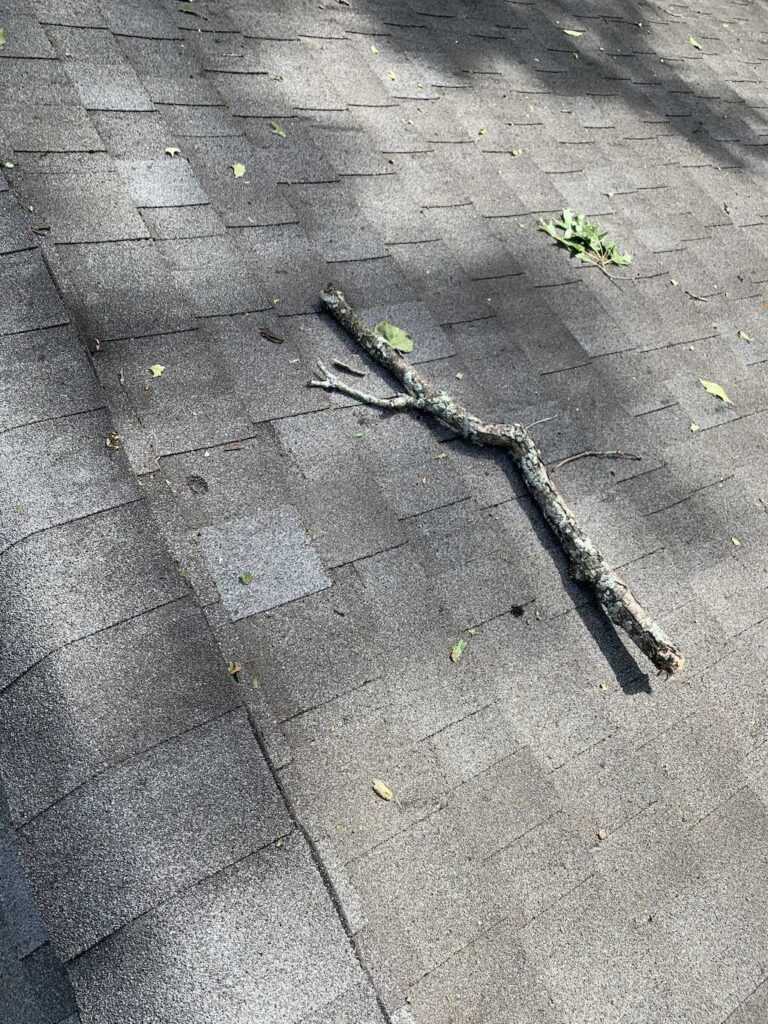In the realm of DIY home improvement, nearly 37% of homeowners embark on projects without professional help. Yet when it comes to measuring a roof for shingles, accuracy is paramount, and a single miscalculation could lead to costly mistakes.
This article delves into a foolproof process that homeowners can follow to determine the number of shingles needed for their roof. Whether you’re replacing worn-out shingles or undertaking a complete roof makeover, you’ll find the necessary guidance here. Don’t leave your project to chance; read on to master the art of accurately measuring your roof for shingles.
Understanding the Basics
Let’s start at the beginning. When we talk about a roof, we’re referring to the topmost part of a house that protects us from weather elements.
The term “shingles” denotes the outer layer of the roof that faces the sky. They’re arranged in an overlapping manner to prevent water leakage. To measure a roof for shingles, we need to grasp two primary concepts: roof square footage and roof pitch.
Roof Square Footage
Roof square footage is the total surface area of your roof. It’s calculated by multiplying the length and width of each section of the roof and then adding those results together. This measurement helps us determine how many shingles we will need.
It’s important to note that the roof square footage is different from the house’s floor area because roofs are usually larger due to overhangs and different pitches.
Roof Pitch
Roof pitch is the steepness or incline of a roof. It’s usually expressed as a ratio that represents the vertical height (rise) for every 12 units of horizontal distance (run).
For example, a pitch of 4:12 means for every 12 feet horizontally, the roof height increases by 4 feet. The pitch impacts how many shingles are needed because steeper roofs require more shingles to cover the same horizontal area.
Tools Needed for Roof Measurement
Got the basics down? Let’s move on to the tools you’ll need for measuring your roof.
Safety Equipment
First and foremost, safety is paramount. Roofing can be dangerous, especially for steep roofs so always have someone with you for safety reasons. Invest in a sturdy ladder, a safety harness, and non-slip shoes to keep you safe as you work.
Measuring Tools
A measuring tape is your best friend when it comes to measuring a roof for shingles. Opt for a long, durable one that can withstand the rigors of outdoor use.
Calculator
You’ll need a calculator to crunch numbers. Whether it’s a physical calculator or an app on your smartphone, make sure it’s within easy reach.
Notebook and Pen
Finally, a notebook and pen will come in handy for jotting down measurements and calculations. You don’t want to forget any crucial numbers!
Steps to Measure a Roof for Shingles
Now that we have laid the groundwork, let’s delve into the process of measuring a roof for shingles. This step-by-step guide will help you achieve an accurate estimate.
Step 1: Evaluate Roof Shape
Before you start climbing ladders and taking measurements, it’s beneficial to observe your roof shape from the ground.
Roofs come in various shapes and sizes. Some are simple, like a gable roof with two flat sections meeting at a ridge. Others are more complex, with numerous planes, peaks, and valleys.
Understanding your roof shape will give you an idea of the number of individual sections you’ll need to measure. It also helps in planning how to navigate the roof safely.
Step 2: Prepare Safety Gear
Roof measurement is not a task to take lightly. Prepare your safety gear, including a sturdy ladder, safety harness, and non-slip shoes. Ensure that you have someone with you for assistance and safety.
Step 3: Measure the Roof
Start by climbing onto the roof using your ladder. It’s best to begin at one edge and work your way across to maintain an organized approach.
First, measure the width of the roof. Extend your measuring tape from one end of the roof to the other, ensuring it’s straight and tight for an accurate measurement. Write this number down in your notebook.
Next, measure the length. This should be done from the roof’s edge at the gutter to the top where it meets the peak. Repeat this process for each plane of the roof, jotting down each measurement.
Step 4: Calculate Each Roof Plane Area
Using the measurements you have taken, calculate the area of each roof plane. You do this by multiplying the length by the width.
For instance, if your roof plane measures 20 feet in width and 30 feet in length, the area would be 600 square feet. Repeat this process for each roof plane.
Step 5: Total the Square Footage
After you’ve calculated the area of each roof plane, add these numbers together. This total gives you the overall square footage of your roof.
Step 6: Determine Roof Pitch
Roof pitch plays a crucial role in determining how many shingles you need. There are a few methods to measure roof pitch, but one of the easiest is using a roofing pitch tool or app. These tools allow you to find the pitch by placing them on the roof and reading the measurement.
Once you have the pitch, you’ll need to convert it into a multiplier, which will be used to adjust your total square footage based on the steepness of the roof. For instance, a roof with a 4:12 pitch has a multiplier of 1.054. You can calculate your using a roofing calculator.
Step 7: Adjust for Roof Pitch
Multiply the total square footage of the roof by the pitch multiplier. This gives you the adjusted roof square footage, which accounts for the added material needed for steeper roofs.
Step 8: Factor in Extra Shingles
Finally, add an extra 10% to your adjusted square footage. This is to account for waste and additional shingles needed for ridge caps and starters.
Calculating the Amount of Shingles Needed
Now that we’ve thoroughly measured the roof, it’s time to put those numbers to work. In this section, we’ll learn how to calculate the number of shingles needed for your roof. It’s important to note that shingles are usually sold by the “square,” where a square of shingles covers 100 square feet.
Step 1: Convert Square Footage to Roofing Squares
First, we need to convert the adjusted square footage (including the extra 10% for waste) into “roofing squares.” This conversion is simple – each roofing square is equivalent to 100 square feet. So, if your adjusted square footage is 2200 square feet, you have 22 roofing squares.
Step 2: Determine Shingle Bundles per Square
Next, we need to figure out how many bundles of shingles you’ll need. This depends on the type of shingles you’re planning to use, as different shingle types come in different bundle sizes.
Most standard three-tab shingles come three bundles to a square. That means for every roofing square, you’ll need three bundles of these shingles.
Architectural or laminate shingles are heavier and come packaged as four bundles to a square. It’s best to check the packaging or ask your supplier to confirm this number.
Step 3: Calculate Total Shingle Bundles
Once you know how many bundles you need per square, you can calculate the total number of bundles. Simply multiply the number of roofing squares by the number of bundles per square.
For example, if you have 22 roofing squares and you’re using three-tab shingles (three bundles per square), you’ll need 66 bundles of shingles.
Step 4: Consider Ridge and Starter Shingles
Don’t forget about ridge and starter shingles. Ridge shingles cap off the peak of your roof, providing a finished look and added protection against leaks. Starter shingles are installed along the eaves to seal the roof and help prevent wind uplift.
You can estimate ridge shingles by measuring the length of your roof’s ridges and hips, then divide by the length covered by each ridge shingle to find out how many you’ll need.
For starter shingles, measure the length of your eaves and rakes. Just like with ridge shingles, divide by the length covered by each starter shingle.
Step 5: Finalize Your Shingle Count
Add up the number of regular, ridge, and starter shingles. This is the total number of shingles you’ll need for your project.
Remember, it’s always better to have a little extra than not enough. Many suppliers will allow you to return unopened bundles, or you could store them for future repairs.
The Role of Technology in Roof Measurement
As we progress further into the digital age, the field of roof measurement is not being left behind. Technological advancements are making the process more efficient, accurate, and safer. Let’s explore what else you can use to help with measuring a roof for shingles.
Aerial Roof Measurement Services
Aerial measurement services use satellite imagery to measure your roof without setting foot on a ladder. These services provide detailed reports that include the number of roofing squares, ridges, hips, valleys, pitch, and more. While there is a fee for these services, they can save a lot of time and eliminate the safety risks associated with climbing on the roof.
Roofing Apps and Software
Various apps and software tools are available to help with roof measurement. Some apps use augmented reality to measure roof dimensions from ground level. Others allow you to draw over satellite images of your home, automatically calculating the square footage.
Drones
Drones equipped with cameras can capture detailed images of your roof. Some roofing professionals use drones for initial inspections, providing a bird’s eye view of the roof’s condition and measurements.
Why Professional Measurement Matters
We’ve walked you through the process of measuring a roof for shingles, and you might be feeling quite capable of tackling this task. While it’s entirely possible to measure your roof yourself, there are compelling reasons why turning to a professional can be beneficial. Let’s explore these.
Safety First
Roofing jobs, even just measuring, carry inherent risks. Falls from roofs account for a large number of serious injuries and fatalities each year.
Professionals are trained in proper safety protocols and have the right equipment to handle the job safely. While you can certainly take precautions, there’s no substitute for professional training and experience.
Accuracy Ensures Efficiency
As we’ve seen, measuring a roof for shingles is a complex process. It involves multiple steps and calculations that leave room for error.
A small mistake in measurement can lead to buying too few shingles, causing delays, or buying too many, leading to unnecessary costs. Professionals do this day in and day out, and their expertise ensures accurate measurements.
Time Savings
Measuring a roof takes time, especially if it’s your first time or if you have a complex roof shape. A professional can complete the job efficiently, freeing up your time for other tasks.
Unseen Damage
Professionals often spot issues that untrained eyes miss, like signs of rot, structural issues, or other hidden damage. Identifying these issues early can save you from more extensive and costly repairs down the line.
Expert Advice
A professional can offer valuable advice on the best type of shingles for your roof and local climate. They can also provide tips on roof maintenance and spot potential issues that could become bigger problems in the future.
Peace of Mind
Perhaps the most valuable benefit of professional roof measurement is the peace of mind it offers. You can rest assured knowing the job has been done correctly and safely.
Ensuring Accuracy when Measuring a Roof for Shingles
Measuring a roof for shingles is a critical task that calls for precision and care. While it is possible to do it yourself, it’s worth considering the peace of mind and safety that comes with professional help.
At Amenity Roofing & Siding, with over 20 years of experience, we provide comfort you can trust. Don’t let your home’s sanctuary be a source of stress. Contact us today for a professional, accurate, and hassle-free roofing experience.

